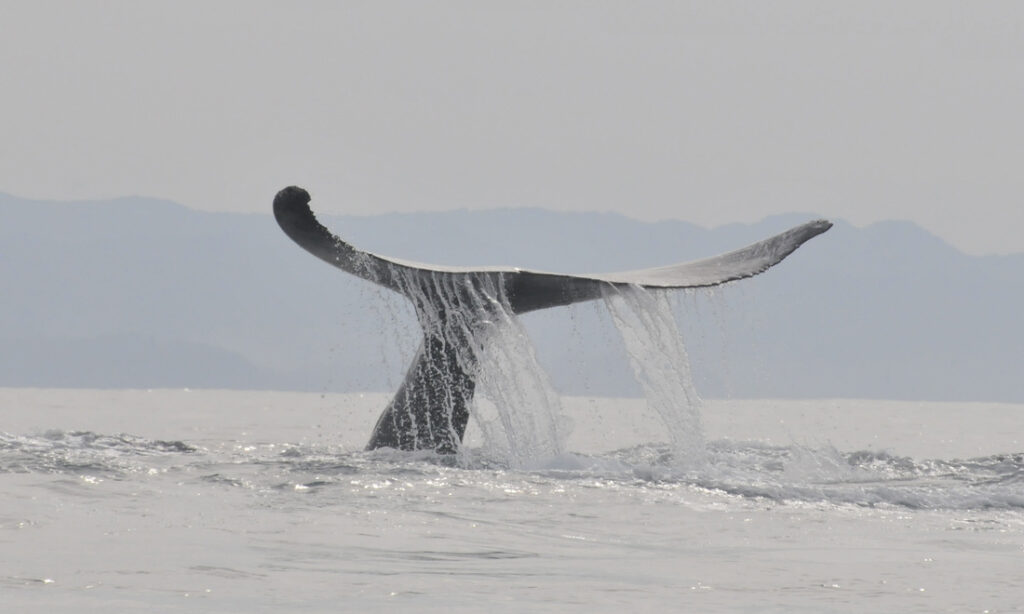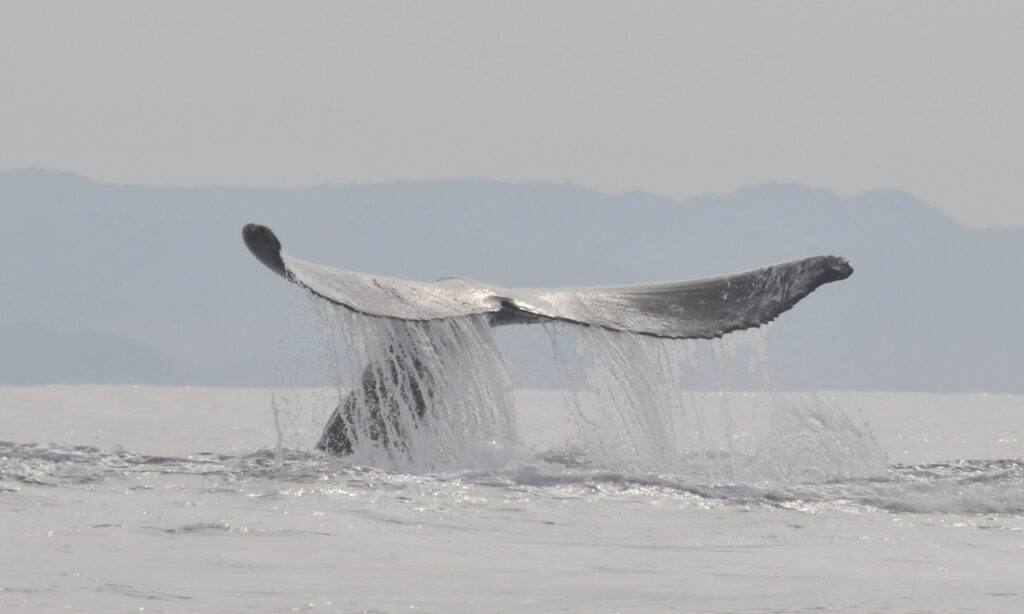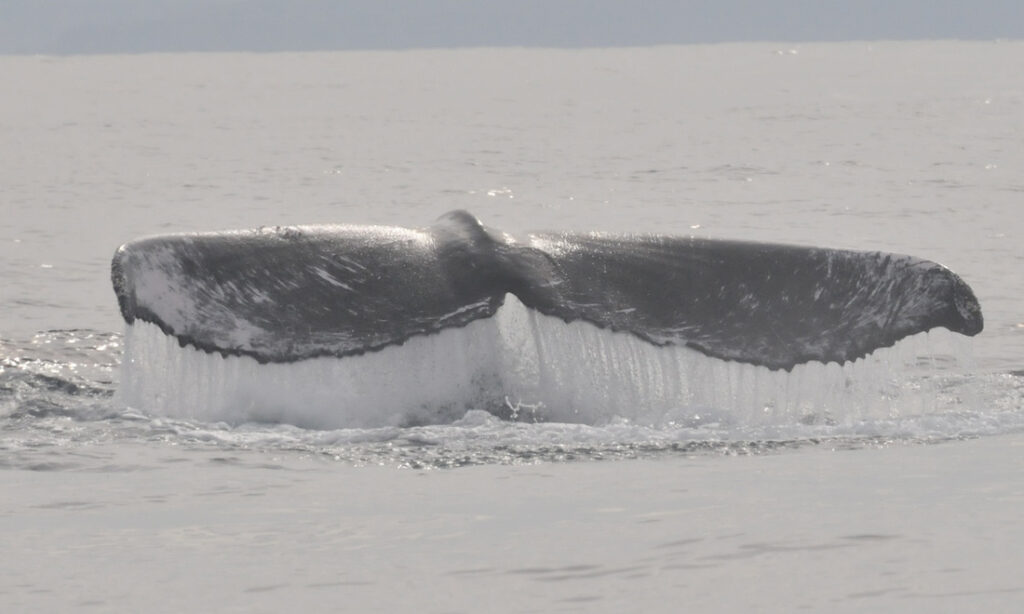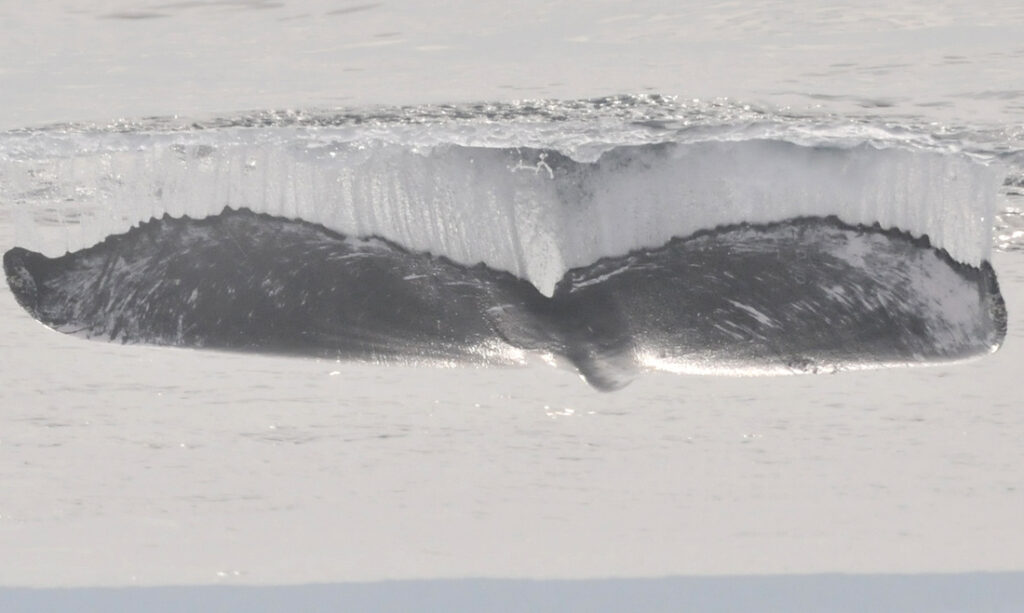One of our main objectives for this project is to collect photo-identifications of the tail flukes of humpback whales. Each whale has unique markings on the undersides of their flukes, and these can be used to recognize individuals.
We share our photo-ids with researchers in other areas to determine which whales we have both seen, which gives us some information about their migration routes. Whales photographed off Panama between July and October have also been seen in Costa Rica, Colombia, Ecuador, Chile and Antarctica. You can also estimate the population size based on how many whales you have seen in previous years and how many whales are new that year. Here is an example of an id photo.

In order to photograph the underside of the tail, you need to be behind the whale as it dives, which is not always easy! To make it even more difficult, whales do not always raise their tails when they dive. Many times the whales we are following never raise their tails.
Sometimes we have to get creative with our fluke ids. This whale was on its back, raising its tail over and over and slapping it down on the water.


It was showing us the underside of the tail, but upside down!

We inverted the photo, and now it is usable as a photo-id.



